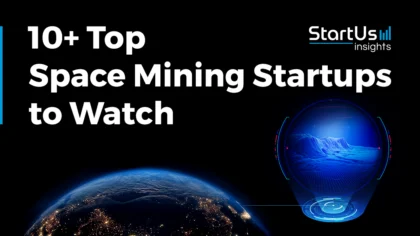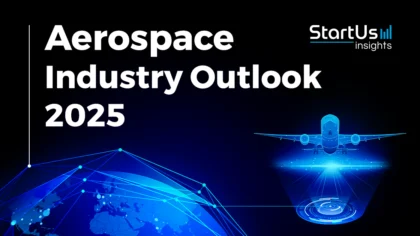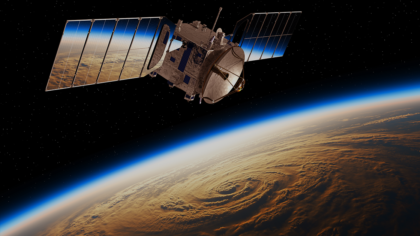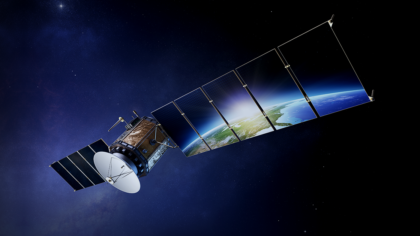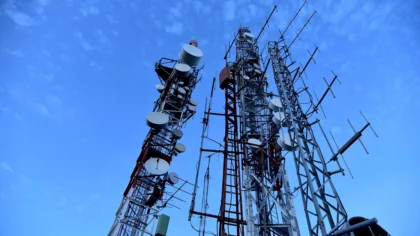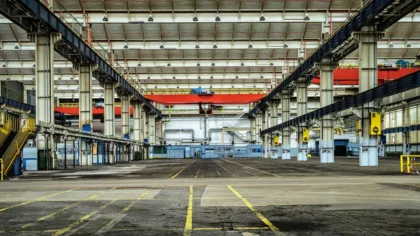Accelerate Productivity in 2025
Reignite Growth Despite the Global Slowdown
We’ve published a brand-new, data-rich report on the Latest Space Industry Trends.
Read the Updated 2025 Space Industry Trend Report!
The space industry utilizes emerging technologies, like 5G, advanced satellite systems, 3D printing, and quantum computing, to enhance and scale operations in space. Weather forecasting, remote sensing, GPS navigation, satellite television, and long-distance communication all depend on space infrastructure. Emerging space industry trends, such as smart propulsion, space robotics, and space traffic management, advance these application areas. Moreover, increasing private investment drives startups to develop novel technologies that streamline movement, operations, and communications between Earth and space. These advancements strengthen the industry’s capabilities and foster innovation, ensuring sustained growth and efficiency in space-related activities.
This article was last updated in August 2024.
Innovation Map outlines the Top 10 SpaceTech Trends & 20 Promising Startups
For this in-depth research on the Top SpaceTech Trends & Startups, we analyzed a sample of 2162 global startups & scaleups. This data-driven research provides innovation intelligence that helps you improve strategic decision-making by giving you an overview of emerging technologies in the space technology industry. In the SpaceTech Innovation Map, you get a comprehensive overview of the innovation trends & startups that impact your company.
10 New Space Technology Trends & Innovations in 2025
- Small Satellites
- Advanced Space Manufacturing
- Advanced Communications
- Space Traffic Management
- Smart Propulsion
- Space Activity Management
- Space Missions
- Space Mining
- Low-Earth Orbit Satellites
- Space Data

These insights are derived by working with our Big Data & Artificial Intelligence-powered StartUs Insights Discovery Platform, covering 4.7M+ startups & scaleups globally. As the world’s largest resource for data on emerging companies, the SaaS platform enables you to identify relevant technologies and industry trends quickly & exhaustively.
Tree Map reveals the Impact of the Top 10 Space Industry Trends in 2025
Based on the SpaceTech Innovation Map, the Tree Map below illustrates the impact of the Top 10 SpaceTech Trends. Startups & scaleups build small satellites like CubeSats and NanoSats to reduce launch costs. Companies also develop reusable launch vehicles to further reduce the cost of launching rockets into space. Fast and secure communications using satellites incorporate advancements in hardware like antennae, transmitters, and receivers.
With an expected growth in space traffic, startups are creating feasible solutions for space travel and traffic management, as well as junk and debris removal. Finally, low-earth orbit (LEO) satellites, along with big data & analytics, play a crucial role in the success of future space exploration and missions.

Global Startup Heat Map covers 2162 SpaceTech Startups & Scaleups
The Global Startup Heat Map below highlights the global distribution of the 2162 exemplary startups & scaleups that we analyzed for this research. Created through the StartUs Insights Discovery Platform, the Heat Map reveals high startup activity in the US, followed by Western Europe and India.
Below, you get to meet 20 out of these 2162 promising startups & scaleups as well as the solutions they develop. These SpaceTech startups are hand-picked based on criteria such as founding year, location, funding raised, & more. Depending on your specific needs, your top picks might look entirely different.
Top 10 New Space Technologies in 2025
1. Small Satellites
Small satellites have become a leading trend in SpaceTech, especially in 2025. Their miniaturization allows for cost-effective designs, and advancements in industrial technology enable mass production. Startups are developing small satellites that perform tasks typically challenging for larger satellites. These include proprietary wireless communications networks, scientific observation, data gathering, and Earth monitoring using GPS.
The small satellite market is expected to reach USD 260.56 billion by 2029, growing at a CAGR of 9.38% during the forecast period. This growth highlights the increasing demand and diverse applications of small satellites in space missions.
Space Inventor utilizes Small Satellite Modules
Danish startup Space Inventor intends to break the pico-satellite tradition of stacking circuit boards in a satellite frame and instead re-institute the use of modules. The startup compiles sub-systems with thermal stability, shielding, and mechanical ruggedness into modules to build small satellites like CubeSats. This saves time for engineers who build and assemble satellites.
EnduroSat makes NanoSats for Secure Communications
Bulgarian startup EnduroSat provides NanoSats and space services to businesses, exploration companies, and science teams. The startup’s NanoSats achieve robust data handling of up to 10 payloads. The satellites incorporate an embedded operational modes framework that considerably boosts efficiency. The small satellites enable secure communications for telemetry and telecommands using high-speed X- and K-band frequencies.
2. Advanced Space Manufacturing
Space manufacturing is embracing cutting-edge technologies like advanced robotics, 3D printing, and light-based manufacturing to enhance space products and services. These innovations are driving the development of large space structures, reusable launch vehicles, space shuttles, and advanced satellite sensors. Automation plays a crucial role in the space industry, particularly for long-term exploration and missions. Consequently, startups are offering solutions specifically designed for the space industry’s needs.
Momentus manufactures Reusable Rockets
US-based startup Momentus makes transportation to space affordable through its reusable rockets. After the final drop-off, the reusable vehicles de-orbit to another orbit. The reusable vehicle is equipped with robotic arms and is capable of performing proximity maneuvers, docking, and refueling, and is well-suited for an entire range of in-orbit services.
Equatorial develops Commercial Sub-Orbital Rockets
Singaporean startup Equatorial develops a commercial sub-orbital rocket capable of delivering small payloads above the Karman line, the boundary between space and atmosphere. The startup’s solution, Dorado, comes in two variants – a single-stage vehicle capable of reaching an apogee of 105 km and a two-stage version designed to exceed a target altitude of 250 km. The two rockets provide 3 and 6 minutes of weightlessness, respectively.
3. Novel Space Communication Systems
Novel space communication systems are a significant trend in the SpaceTech industry, focusing on advanced methods for transmitting and receiving data in space. The use of laser communication relay systems offers faster data rates and more secure communication compared to traditional radio frequency systems. Whereas, quantum key distribution (QKD) in space provides ultra-secure communication channels by using quantum mechanics principles.
Additionally, the deployment of CubeSats, small and cost-effective satellites, is enhancing space communication by enabling a network of devices for broader coverage and more efficient data transmission. These advancements are transforming how we communicate in space, offering faster, more secure, and more efficient methods.
Thorium develops Ultra-Flat Interference-Free Antenna
Polish startup Thorium develops an ultra-flat, scalable active-matrix antenna. The antenna uses a band that is relatively free from interference from the Earth or space. As a result, it improves throughput and system capacity when compared to the existing systems. Besides, the antenna uses high radio frequencies and incorporates the functionalities of electronic control and beam modeling.
CommStar enhances Earth-to-Moon Communication
CommStar is a US-based startup that makes COMMSTAR-1, a satellite for Earth-to-Moon communications. This satellite overcomes the speed limitations of current space infrastructure, offering high-speed optical and radio frequency relay capabilities.
Positioned closer to the moon, it allows lunar assets to communicate more efficiently, using less power and space. This technology benefits both public and private space initiatives, enhancing data services for lunar landers, resource mining, and cislunar communications.
4. Space Traffic Management
The increasing number of satellites and space debris in Earth’s orbit calls for improved space traffic management. Advanced satellite tracking systems employ radar and optical sensors to actively monitor and predict potential collisions.
Automated collision avoidance systems represent another development, autonomously adjusting satellite orbits based on algorithmic threat analysis. Furthermore, the establishment of international regulatory frameworks standardizes space operations, ensuring safe and sustainable space utilization and preventing orbital congestion.
ClearSpace facilitates Satellite Relics Removal
ClearSpace is a spin-off from the Swiss EPFL Space Center that develops technologies to remove unresponsive or derelict satellites from space. The startup’s small satellite solution finds, captures, and removes man-made space debris repeatedly. The startup plans to remove the first pieces of debris from space by 2025.
OrbitGuardians enables Low-Cost Active Debris Removal
US-based startup OrbitGuardians is a commercial provider of active debris removal services. The startup aims to protect space workers, tourists, and operating satellites by actively removing dangerous space debris smaller than twenty centimeters. By utilizing computer vision, AI, and the Internet of Things (IoT), the startup enables low-cost debris removal by acquiring all the available debris parameters like location, size, and the number of debris chunks.
5. Smart Propulsion
Smart propulsion systems are a key trend in the SpaceTech industry, offering innovative solutions for space travel. Examples include electric propulsion systems, which use electrical energy to accelerate propellant at high speeds, and green propulsion systems, utilizing environmentally friendly fuels like hydrogen and oxygen.
Water-based propulsion uses water as a propellant, offering a safe and cost-effective option. Iodine-based propulsion systems are also gaining attention for their efficiency and compactness, making them suitable for small satellites. The global space propulsion market, encompassing these innovations, is projected to reach USD 18.1 billion by 2028 at a CAGR of 11.8% from 2023-2028. This growth reflects the increasing demand for advanced and sustainable propulsion solutions in space missions.
ThrustMe develops an Electric Propulsion System
French startup ThrustMe offers an electric space propulsion system that uses iodine as a propellant. The startup’s solution is a low-cost propulsion alternative for bigger satellites. ThrustMe’s technology finds applications in newer satellites, as well as in products designed to solve emerging challenges associated with the rise of satellite constellations.
Dawn Aerospace develops a Non-Toxic Propulsion System
Based in New Zealand and the Netherlands, Dawn Aerospace builds same-day reusable launch vehicles and high-performance, non-toxic propulsion systems for satellites of all sizes. The startup’s SmallSat Propulsion Thruster replaces poisonous hydrazine with nitrous oxide and propene. For CubeSats, it significantly improves performance than electric-based propulsion systems with the same propellants.
Find out how 10 emerging technologies shape your industry!
6. Space Activity Management
The increasing number of space missions demands efficient coordination of various space missions and activities. As a result, startups are offering advanced space activity management solutions. The development of advanced mission control software enables real-time monitoring and management of spacecraft and satellites. The use of AI-driven analytics for predicting and mitigating potential orbital conflicts enhances the safety of space operations.
Additionally, blockchain is being integrated to secure and streamline communication and data exchange between spacecraft, ground stations, and control centers, ensuring reliable and tamper-proof operations in space. These technologies collectively enhance the efficacy and safety of space activities.
Continuum simplifies Space Mission Lifecycle Management
Continuum is a US-based startup that offers a cloud-based platform for space mission lifecycle management. Its suite of tools provides high-fidelity simulations for designing, optimizing, deploying, and operating satellites. It supports missions around Earth, the moon, and other planetary bodies.
The platform integrates NASA tools like SPICE, GMAT, and MONTE for mission design and navigation. It benefits users in designing space missions, analyzing spacecraft performance, and managing space and ground assets.
Obruta Space advances In-Orbit Satellite Servicing
Canadian startup Obruta Space Solutions develops a device to enable new satellites to be serviced in orbit. The startup’s solution, Puck, extends the operational lives of satellites with refueling services and upgrades. The device also allows satellites to extend their lifespans while aiding in their eventual removal and enabling humans to sustainably occupy orbital environments.
7. Space Missions
Space exploration addresses the fundamental questions about our universe and the history of our solar system. By addressing the challenges related to space exploration, humans find opportunities to advance mining, material science, and life science research. Utilization of reusable rockets significantly reduces the cost and increases the frequency of space missions.
Deployment of small satellites enables a wide range of missions from Earth observation to deep space exploration at a lower cost. Additionally, developments in interplanetary spacecraft are facilitating missions beyond Earth’s orbit, including Mars rovers and probes to study distant planets and asteroids. These technologies are expanding the scope and capabilities of space exploration.
Lunar Station advances Lunar Environment Visualization
US-based startup Lunar Station develops a technology platform to convert lunar sensory datasets into 3D visualizations of environmental conditions on the moon. The startup’s solutions provide rapid and mission-specific intelligence to improve mission planning. Its products MoonHacker and Moon Navigational Services provide clients with cutting-edge lunar environmental intelligence.
Helios enables In-Situ Resource Utilization
Israeli startup Helios provides in-situ resource utilization (ISRU) technology to realize the vision of setting permanent lunar and martian bases. The startup’s Molten Regolith Electrolysis Reactor separates the abundant oxides found on Martian and Lunar surfaces. The startup’s reactor then converts into oxygen and various metals such as iron, aluminum, and titanium. The startup also works on storage technology to enable the optimal utilization of produced oxygen.
8. Space Mining
The mining of celestial bodies is shifting from science-fiction (Sci-Fi) to reality. Robotic mining equipment designed for extreme space environments is capable of autonomously drilling and extracting resources. Another significant development is the use of spacecraft equipped with advanced sensors and AI to identify and analyze resource-rich asteroids.
Additionally, technologies for in-situ resource utilization (ISRU) are being developed to process materials in space, reducing the need to transport resources back to Earth. These advancements are paving the way for sustainable resource acquisition beyond our planet.
Asteroid Mining Corporation makes Asteroid Mining Satellites
UK-based startup Asteroid Mining Corporation develops a satellite to prospect near-earth asteroids (NEAs) as mining candidates. The startup provides a series of different spacecraft for prospecting, exploration, and extraction, with each craft performing a particular mission. Its proprietary dataset generated from its Asteroid Prospecting Satellite One (APS1) mission guides explorers to specific mining candidates.
HEO Robotics utilizes Space-based Cameras for Asteroid Mining
Australian startup High Earth Orbit Robotics combines intelligent control with space-based cameras to acquire high-quality imagery of satellites, space debris, and resource-rich asteroids. This imagery is then useful for locating and observing asteroids for mining. The startup builds small satellites that operate in high-earth orbit (HEO) to observe celestial bodies.
9. Low-Earth Orbit Satellites
A low-earth orbit (LEO) is relatively close to Earth’s surface and is normally at an altitude of less than 1000 km but could be as low as 160 km above Earth. Also, LEO satellites do not always follow a particular path around Earth. This means that there are more routes for satellites in the LEO. This makes it a feasible target for space companies. To this end, startups develop relevant solutions and techniques to deal with LEO-related challenges.
For example, advanced communication systems specifically designed for LEO satellites focus on enhancing signal strength and reducing latency to ensure reliable data transmission. In addition, they are innovating in satellite health monitoring technologies that meticulously track and maintain the operational status of LEO satellites, using advanced diagnostics and predictive maintenance.
SpaceAble enables Decentralized LEO Satellite Inspection
French startup SpaceAble provides an on-demand in-situ asset inspection solution for LEO satellites. It uses a decentralized approach to gather outer-space awareness and provides the space community with critical data and operational safety. The startup is currently in the process of creating a safe environment free of redundancy and other malfunctions.
WARPSPACE develops an Optical Telecom Service for LEO Satellites
Japanese startup WARPSPACE offers LEO optical telecommunication services since 2023 with its optical data relay network in the medium-earth orbit (MEO) for satellite operators. This network will develop communication with the LEO satellites using an optical link. Users only have to equip a small optical transceiver that the startup provides. Further, by using their services, LEO missions will be able to achieve one Gbps connection.
10. Space Data
LEO satellites and multi-satellite constellations are increasingly in use for communication, spying, earth monitoring, and other imaging applications. With large volumes of data from these satellites, there is a need to process, treat, analyze, and manage the information. SpaceTech startups are utilizing AI to intelligently analyze satellite data, enabling faster and more accurate interpretation of vast information streams from space.
They are also leveraging blockchain technology to ensure secure and tamper-proof data transmission, enhancing the reliability of communication between satellites and ground stations. Additionally, big data analytics are being employed to manage and process the enormous datasets collected by satellites, facilitating efficient data storage, retrieval, and utilization for various space applications.
Kleos provides Geo-located Radio Frequency (RF) Activity Data
Luxembourg-based startup Kleos delivers its data products via application programming interfaces (APIs) to suit customers’ requirements. The Guardian RF presents unprocessed data from the startup’s satellites, suited for companies with their own geo-location analysis or signal intelligence capabilities. The Guardian LOCATE data delivers geo-located RF activity data. Lastly, Guardian UDT is a user-defined data set that allows the selection of specific areas of interest, such as ground station and level of security.
LeoLabs offers Data-driven Precise Satellite Tracking
US-based startup LeoLabs provides data services for precision tracking and monitoring of satellites using its orbital products and phased-array radars. The startup also provides data for quick location and identification of new payloads at LEO through ephemerides. Its data services provide space intelligence and awareness by tracking satellites and space debris in real time.
Discover all Future Space Technology Advancements & Startups
The Space Startups & Trends outlined in this report only scratch the surface of trends that we identified during our in-depth research. Among others, communication, advanced manufacturing, robotics, big data, material science, and 3D printing will transform the sector as we know it today.
Identifying new opportunities and emerging technologies to implement into your business early on goes a long way in gaining a competitive advantage. Get in touch to easily and exhaustively scout relevant technologies & startups that matter to you.


 WATCH THE VIDEO VERSION
WATCH THE VIDEO VERSION 

